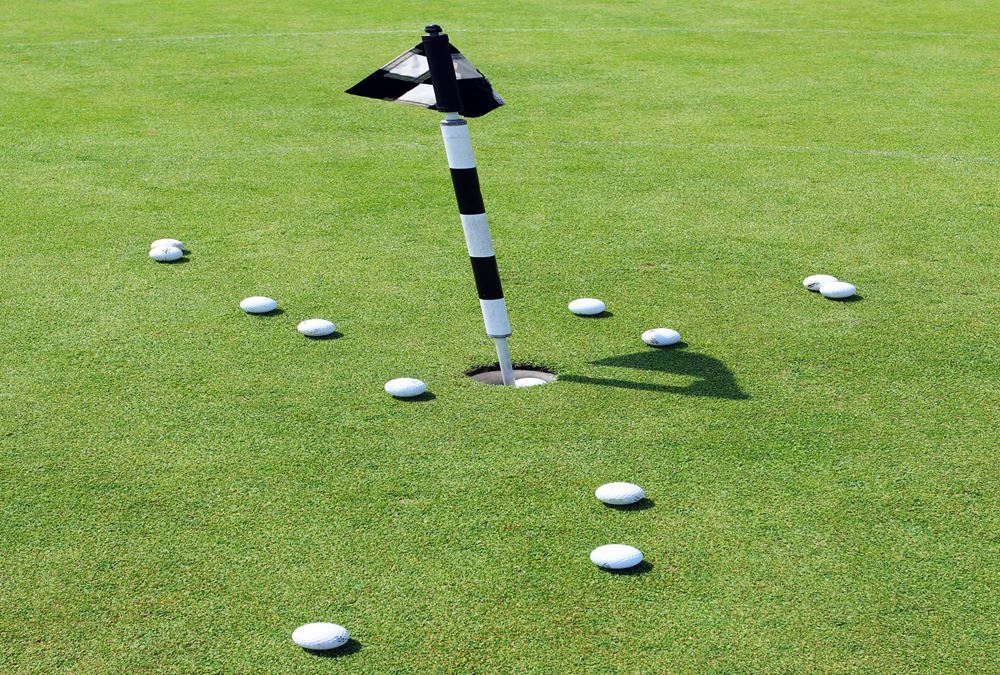- Home
- Business Processes
- Industry Knowledge
- Aerospace Industry
- Automotive Industry
- Banking Domain
- BFSI Industry
- Consumer/ FMCG Industry
- Chemicals Industry
- Engineering & Construction
- Energy Industry
- Education Domain
- Finance Domain
- Hospitality Domain
- Healthcare Industry
- Insurance Domain
- Retail Industry
- Travel and Tourism Domain
- Telecom Industry
- Leadership Skills
- eLearning
- Home
- Leadership
- Leadership Theories
- Contingency Theories of Leadership
Contingency Theories of Leadership
Contingency theories of leadership focus on both the leader's persona as well as the situation/environment in which that leader operates. These theories consider the context of leadership which means whether or not the leadership style suits a particular situation and states that a leader can be effective in one circumstance and a failure in another one. A leader will be most effective when he applies the right leadership style to a given situation and environment around him. Contingent leaders are flexible and adaptable.
What is your natural leadership style and do you have the flexibility to change your style based on situations or environments? In this article, we will explore Fiedler's Contingency Model, and focus on particular variables related to the environment that might determine which particular style of leadership is best suited for the given situation.
Contingency Theories & Behavioral Theories
Contingency theories are a class of behavioral theory that contends that there is no one best way of leading and that a leadership style that is effective in some situations may not be successful in others.
Contingency theories are a class of behavioral theory that claims that there is no best way to organize a corporation, to lead a company, or to make decisions. Instead, the optimal course of action is contingent (dependent) upon the internal and external situation. An effect of this is that leaders who are very effective at one place and time may become unsuccessful either when transplanted to another situation or when the factors around them change.
The contingency and path-goal approaches are an extension of behavior approaches in the sense they also stress on motivational aspects of the leader and followers. However, they equally stress the interactional aspects of leadership particularly the interaction of individual and organizational factors.
Previous theories such as Weber's bureaucracy and Taylor's scientific management had failed because they neglected that management style and organizational structure were influenced by various aspects of the environment: the contingency factors. There could not be "one best way" for leadership or organization.
Situational & Contingency Theories
Contingency theories of leadership attempt to solve this shortcoming of earlier theories by focusing on particular variables related to the environment that might determine which particular style of leadership is best suited for the situation. According to contingency theory, a leader’s success depends upon a number of variables, including the leadership style, qualities of the followers, and aspects of the situation.
Further, situational and contingency theories overlap to a great extent. Because of their closely related philosophy, the situational theory and contingency theory are often mentioned together.
The contingency model of leadership suggests that individual and organizational factors must be correctly matched for effective leadership and the group effectiveness is contingent upon the match between leadership style and the extent to which the group situation is favorable to the leader's effectiveness depends on the interaction of the leader's behavior with certain organizational factors.
This helps to explain how some leaders who seem for a while to have the 'Midas touch' suddenly appear to go off the boil and make very unsuccessful decisions. Thus, we can say that the basic assumption of this theory is that the leader's ability to lead is contingent upon various situational factors, including the leader's preferred style, the capabilities and behaviors of followers, and also various other situational factors.
Contingency Theories of Leadership
In the contingency theory of leadership, the success of the leader is a function of various contingencies in the form of subordinate, task, and/or group variables. The effectiveness of a given pattern of leader behavior is contingent upon the demands imposed by the situation.
To understand this theory we should examine the individual leader, the organizational factors (or leadership situation), and the interaction of these factors. As per this model, leader effectiveness is based on two factors, "the leadership style" and "the situational favorableness" (also known as "situational control"). In short, the contingency theory is concerned with styles and situations.
Situational Control
Sometimes the success of a leader does not depend upon the qualities, traits, and behavior of a leader alone. The context in which a leader exhibits her/his skills, traits, and behavior matters, because the same style of functioning may not be suitable for different situations. Thus the effectiveness of leadership also depends upon situations.
Situational Variables
Several research studies, when analyzing the reason for inconsistent results in differing conditions with the same leadership style, laid their focus on situational variables.
The contingency theory allows for predicting the characteristics of the appropriate situations for effectiveness. According to Fiedler, the ability to control the group situation (the second component of the contingency model) is crucial for a leader. This is because only leaders with situational control can be confident that their orders and suggestions will be carried out by their followers.
This theory views leadership in terms of a dynamic interaction between a number of situational variables like the leader, the followers, the task situation, the environment, etc.
Fiedler broke this factor down into three major components: leader-member relations, task structure, and position power. Both low-LPC (task-oriented) and high-LPC (relationship-oriented) leaders can be effective if their leadership orientation fits the situation.
Leadership Styles based on Contingency Model:
Jack Welch has once commented “It goes without saying that you cannot pigeonhole. Good people are too multifaceted. That said, I would still make the case that due to their skills and personalities, some people work more effectively in commodities and others are better in highly differentiated products or services... The right people for [a commodity] business are hard-driving, meticulous, and detail-oriented. They are not dreamers; they’re hand-to-hand combat fighters. . . . At the other end of the spectrum, it’s generally a different kind of person who thrives, not better or worse, just different”.
According to contingency theory also, leadership styles can be described as task-oriented or relationship-oriented. Task-oriented leaders are concerned primarily with reaching a goal or completing a task whereas relationship-oriented leaders are concerned with developing close interpersonal relationships with their followers.
List of Contingency Theories
Several contingency approaches were developed concurrently in the late 1960s, however; the most widely recognized is Fiedler’s (1964, 1967; Fiedler & Garcia, 1987). Contingency theory is a leader–match theory which tries to match leaders to appropriate situations. It is called contingency because it suggests that a leader’s effectiveness depends on how well the leader’s style fits the context or the situation.
Some of the noteworthy studies on situational contexts that gained wide recognition include
- Fiedler Model of Leadership
- Hersey and Blanchard’s Situational theory
- Leader-Member Exchange theory
- Path-Goal Leadership Theory
- Leader-Participation model
- Cognitive Resource Theory
- Life cycle theory of Leadership
- Multiple Linkage Model
- Normative Leadership Theory
- Participative Leadership Theories
- Situational Leadership Model
- Strategic Contingencies
- Vroom's Expectancy Theory
Related Links
You May Also Like
-
Trait theories of leadership explain the leadership traits that have been studied to determine what makes certain people great leaders. The practical application of the theory is looking at how the leader‟s behavior affects their subjects.
-
In the field of communication studies, there are numerous models. No one model is suitable for all purposes and all levels of analysis. Some common models are known as Lasswell Model, George Gerbner Model, David Berlo Model, Shanon and Weaver Model, Osgoods Model, and Schramm Model. All these describe the four components of the communication process, namely, the source (communicator), the message, the channel, the receiver (audience).
-
Transactional Analysis also is known as the theory of human personality was proposed by Eric Berne in the 1950s. This theory of transactional leadership defines three different ego states in a person who engages in transactions with another person's ego states. These three ego states refer to major parts of an individual's personality and reflect an entire system of thought, feeling, and behavior.
-
Process & Stages of Creativity
Creative ideas do not come just like that. There is a process to it. There are a number of techniques of creativity to support the generation of ideas but the widely practiced ones are brainstorming and lateral thinking. Most innovations are not so much the product of sudden insights as they are the result of a conscious process that often goes through multiple stages. The creative process can be divided into four stages of preparation, incubation, evaluation, and implementation.
-
Normative leadership theories are built on moral principles and tell leaders how they ought to act. Victor Vroom formulated the normative model of leadership that specifically address leader behavior explicitly built on moral principles or norms. Normative leadership theories tell leaders how they should act to raise the moral performance inside the working group and manage their different responsibilities.
-
According to Environmental theories of leadership, a leader needs to deal effectively with environmental complexities and lead in a certain style as a result of environmental responses. Environmental influenced leadership demand leaders to learn how to adjust environmental factors. Leaders also have the responsibility of creating the right kind of environment for their followers by focusing on environmental factors and pressures.
-
Trait Theory of Leadership is based on the assumption that people are born with inherited traits and some traits are particularly suited to leadership. The theory aims to discover specific leadership & personality traits and characteristics proven to predict the likelihood of success or failure of a leader.
-
Situational Leadership - Application
Situational Leadership Theories are well known and frequently used for training leaders within organizations. Practical application is how to choose the right leadership approach for the situation. The theory emphasizes leader flexibility and advises leaders to flex their style based on the followers' needs. Leaders must adapt their leadership style to fit the prescribed task, understanding given situation/maturity of followers.
-
Power is the ability to exercise influence or control over others. Leadership involves authority and it is very important for leaders to understand what type of power they're using. The 5 Types of Power in Leadership are Coercive power, expert power, legitimate power, referent power, and reward power. Authority is the right to command and extract obedience from others. It comes from the organization and it allows the leader to use power.
-
Situational Theories of Leadership
The situational theories of leadership assume that the most effective style of leadership depends from situation to situation. Situational leadership is a leadership style in which the leader must adjust to match the development needs of the followers. They must adapt varying behaviors to strike the right balance between task & relationship based on different levels of maturity of followers and also as followers develop and cultivate their skills.
Explore Our Free Training Articles or
Sign Up to Start With Our eLearning Courses

About Us
Learning
© 2023 TechnoFunc, All Rights Reserved










